Meet the greenkeepers: Craig Haldane and Scott Fenwick
Related Articles
Gleneagles has – until now – treated its three famous golf courses as separate entities with each having their own greenkeeping team. This has now changed.
The duo talk about ‘One Team’, Craig’s new role and how course managers can get the most out of their venues.
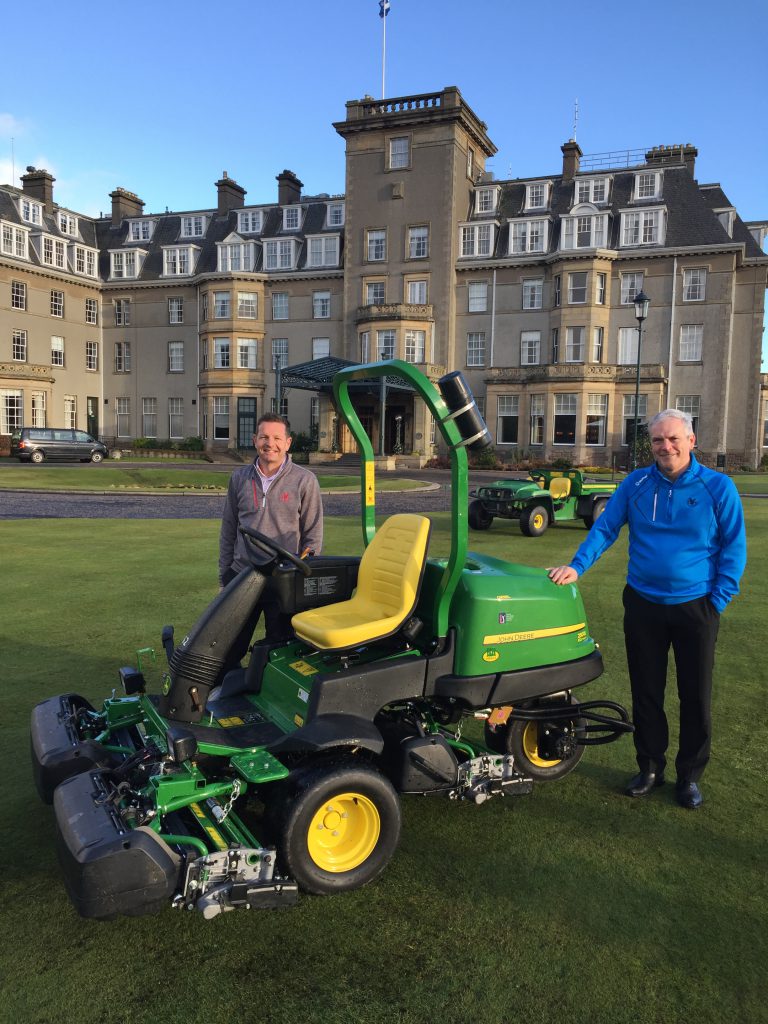
Craig Haldane (left) and Scott Fenwick
Last year Gleneagles appointed Craig Haldane as its new golf courses manager. South African Craig, a well-known figure in the global golf industry, joined the venue from Emirates Golf Club, Dubai, where he held the position of director – golf course maintenance, and had led golf course operations at the iconic Middle East venue for the past 11 years. He’d also held senior roles at Nad Al Sheba Golf Club, Dubai, Riffa Golf Club, Bahrain, Ria Bintan Golf Club, Indonesia and Fancourt Hotel, South Africa.
Gary Silcock, director of golf at Gleneagles, said: “His global experience and expertise will be a huge asset as we continue to invest in our golf business and customer experience. Bringing together Craig’s experience with Scott Fenwick, our director of agronomy and estates, who has 38 years of tournament expertise here at Gleneagles, is helping us create one of the strongest tournament teams in golf.”
Gleneagles is a blend of natural beauty and golfing adventure, its three championship courses were inspired by two of the biggest names in the game, five times Open winner James Braid and the ‘Golden Bear’, Jack Nicklaus. It was him who created the PGA Centenary Course, the venue for the 2014 Ryder Cup. The facility also comprises the Braid-designed King’s Course, opened in 1919, and has been described as a masterpiece of golf course design. There is also the shorter Queen’s Course, which has seen the likes of Seve Ballesteros, Tom Watson and Lee Trevino play on it, as well as an academy course and a PGA academy.
“Gleneagles is one of the world’s great golf estates and the opportunity to work with Gary and the team to deliver the next chapter in its illustrious golfing history is something I am hugely looking forward to,” said Craig at the time. “The King’s, The Queen’s and The PGA Centenary Course are already recognised the world-over as exceptional golf experiences and I am confident that in my new role, and with the support of the incredible golf team at Gleneagles, we will be able to take the management, conditioning and preparation of all courses to the next level.”
GreenKeeping caught up with him and Scott to see how this appointment has been working out.
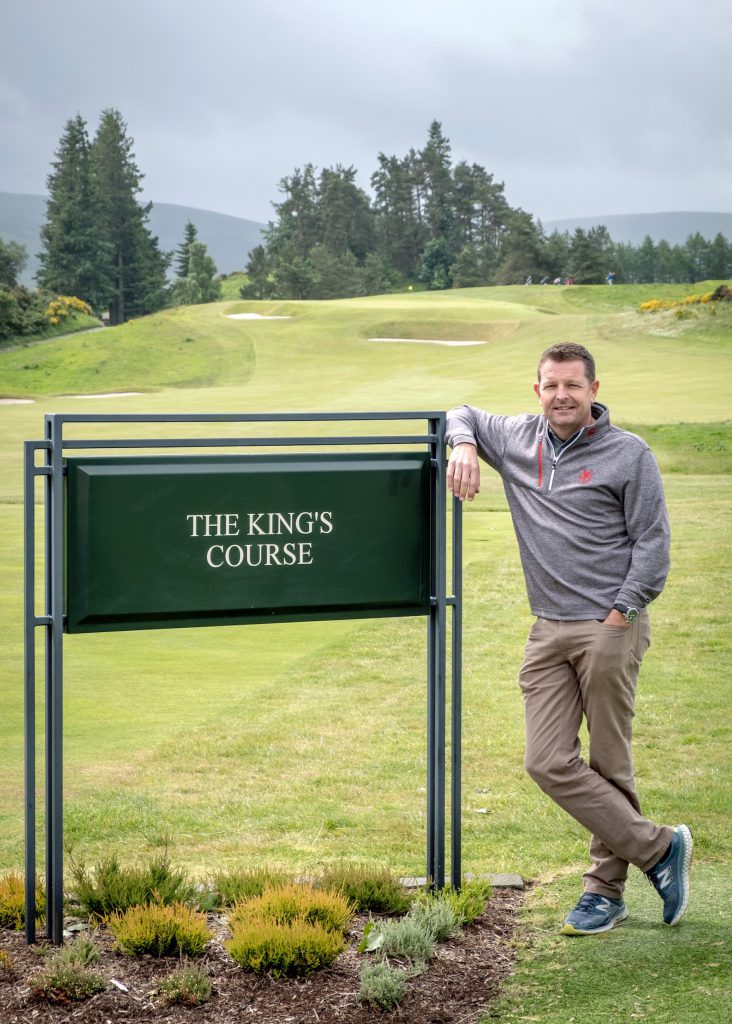
Can you explain the ‘One Team’ philosophy in relation to the greenkeeping team, its core values and the improvements this has already led to?
Craig Haldane: The four core values within our organisation are ‘Warm and Thoughtful’, ‘Pride’, ‘Sense of Adventure’ and ‘One Team’. For us in the golf course maintenance department we use these values as the foundation blocks in all that we do.
We have centralised our maintenance facility and now operate our full fleet of equipment and our entire team from the central compound. It is well positioned within the 850-acre estate and allows us easy access to all three courses. This allows us to maintain all 63 holes and the practice facilities as a single unit which provides our colleagues with the opportunity to gain experience throughout the entire operation and not just on one particular golf course. In the past we were operating our courses as individual properties and one of them from a separate compound and as a dedicated greenkeeping team.
By centralising ourselves we have truly embraced the One Team value and it has made a massive difference already. We no longer have the ‘us’ and ‘them’ scenario within a single department. Whilst healthy competition and banter is a great thing and is something that has not been lost, we felt we had a better opportunity at building a unified team that were working towards a common goal by creating the right environment for all to succeed and grow. Having a clear vision of where it is we want to go as a department and communicating this to the team has been a key element to the success of the structure and whilst the transition has had its ups and downs, I am truly excited to see the positive change in individual attitudes, their willingness to learn and how eager they are to progress themselves over the years ahead.

Gleneagles – Queens Course
Your mantra is ‘80 per cent people and 20 per cent turf’. Can you explain more about this?
Craig Haldane: It’s really quite simple in my opinion. I challenge any course manager to deliver a great product without an engaged team. The key word here is engaged. Consider this: You are rowing an eight-man boat and two oarsmen at the back are digging their oars in and trying to stop the rest from getting to the finished line. You are not going to succeed as quickly as you would like and other team members who are working really hard are being discouraged. This causes upset and confusion and a general air of unhappiness within the team.
So whilst I may have said it’s really quite simple – it is as long as you appreciate the journey that is required to build the right team and have the patience, knowledge and dedication to see it through.
Every single member on your team wants to know that you care for them and their career – fact. They may not admit it but it’s true. As course managers we are here to enhance the careers of those who work with us, end of. That career may not be with you for a long period of time. Individuals grow and develop and that is a good thing. What can we do to help them move on to the next opportunity, with the skills they require to be successful? If they do not succeed in their careers, then we have not succeeded.
What are you doing to ensure each greenkeeper’s mind is opened and filled with beneficial information to advance their learning opportunities, and drive the quality and productivity of the team forward?
Craig Haldane: Learning on the job is in my opinion the best way to fully appreciate, understand and learn in our industry. This is based on providing individuals a platform to feel that they can ask genuine questions of the leadership irrespective of how simple that question may be. You have to create a culture of learning within your team by making all colleagues feel confident that when they ask a question, they walk away having learnt something whilst importantly feeling they have gained value from the conversation.
The reverse of this is almost as important if not more important to me. Asking your colleagues what they think would be the best thing to do in a situation, or asking their opinion on what they think may be a better way to do a task we are engaged with. This is what creates a team that are working towards excellence, who feel part of the process and who buy into the philosophy of being here for a greater cause.
External education is essential off course. It provides you with the opportunity to formalise something you love to do. This can be in the form of an actual higher education course in agronomy. It is also done through inviting industry professionals to come and talk to the team on a variety of subjects. To date, we have hosted Thom Nikolai from Michigan State University to come and deliver a three hour seminar to our team. This is invaluable as time with Thom at GSCAA would cost a fair amount but through our network and relationship it was an easy ask to invite him to stop over whilst on another engagement. (Thanks Thom!)
We have suppliers who we have great relationships with throughout the business. Your relationships need to be two-way and it’s important for course managers to get the most out of those who you engage with in business. Do you want a discounted price on an order of seaweed, or do you want that discount to be traded in for the opportunity to educate your team. The answer is simple in my opinion. Invest in people, always.
BIGGA provides us with great opportunities to learn through their local sections and by connecting with our Scottish central section team we were able to send a group of colleagues down to Ladybank Golf Club who kindly hosted seminars in the autumn. We look forward to attending and supporting more of these initiatives in the years ahead. Off course we attended BTME at Harrogate and this is once again a great chance for individuals to take further education and meet with industry leaders.
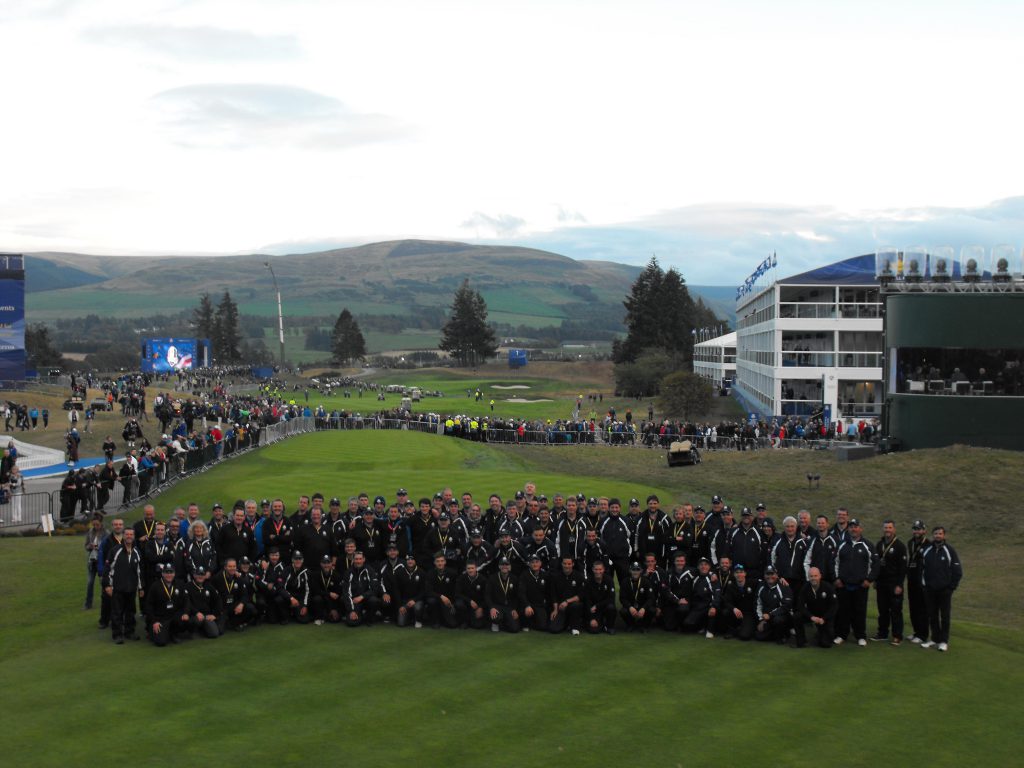
What were your first thoughts and actions when you arrived at Gleneagles and how did you go about building your action plan?
Craig Haldane: I was excited, very excited. Being at Gleneagles and being tasked with building this team at what can only be described as one of the most beautiful properties I have had the privilege of working on, was a ‘pinch yourself’ moment. From the onset I knew that this would be a challenge. It is what attracted me to the opportunity.
I felt it pertinent to observe and learn from the team in place. Individuals within the team have years of experience and were tasked with holding the fort prior to my appointment. It was a difficult time for them and they did an outstanding job. When you have experience on your team you need to tap into it without question. Was I in agreement with everything in place? No, but if I was to come in and make massive changes too early in the process we would have struggled. I knew what was needed, but I had to respect the team in place, listen carefully to their grievances, needs and desires and guide them gently through the change that was underway.
I have a great interest in change management and leadership, having attended many seminars and read fascinating books and case studies on the subject. Understanding the change cycle has really helped with the transition. This is something I have been through as part of a complete culture change at Dubai Golf and helping lead that change as part of our service culture certainly gave me the experience needed to see this through.
The action plan was simple. Get to know the property and business quickly. Show the team how much value they bring. Earn their trust and respect and give them my personal time. Provide a clear vision for the department and communicate this to them. We then needed to restructure the department and provide opportunities for growth and development.
This all needed to be done while running an existing operation, hosting three key events through a very dry summer and relocating a family to a new country. Fun!
Change is constant and your work is never done. We are on a pathway now and it will continue to evolve as we develop and grow as a team.
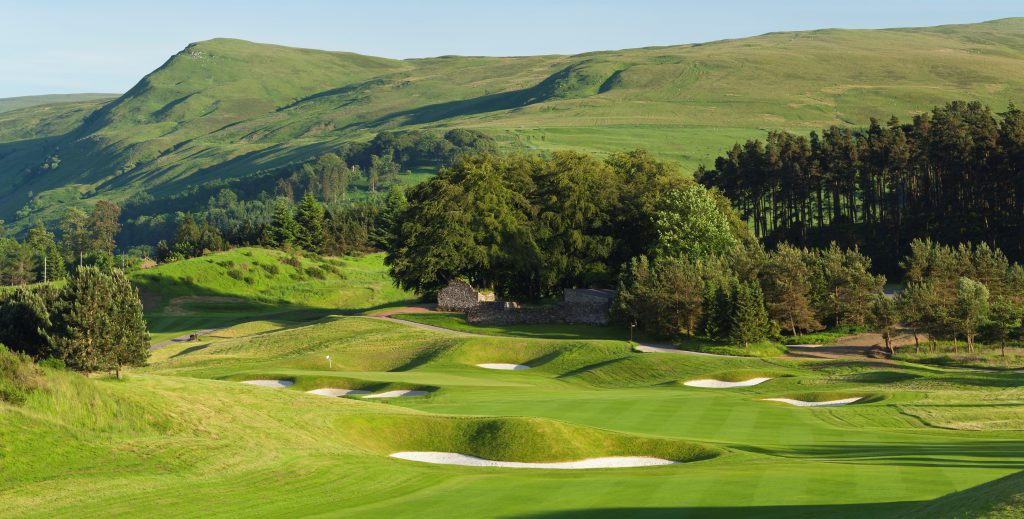
In terms of the structure of the team from point of view of promotion / movement / training – what has happened to date and what plans are there moving forward?
Craig Haldane: We have created a new organisational structure which provides individuals with opportunity, empowerment and accountability. One course manager can’t see 63 holes in detail each and every day. By recognising existing talent within the team, we have been able to provide great opportunities for individuals to excel at what they are already very good at. We now have leadership on each golf course with a support structure in place to ensure we have eyes in the right places to pick up on attention to detail.
Empowerment is key and the key to empowerment is being there to support, teach and guide when things go wrong. This creates learning opportunities and trust among us all.
Newcomers to the team this season will be walking into an environment where the existing team are a resource that are ready and able and who want to succeed. There is a standard that we are all proud of and the mantra is simple. What can I do today that will make the job easier for the person who will be doing this tomorrow? With that mindset, can you imagine what could be achieved?
We have such an opportunity to provide three unique golfing experiences and the next four years will be a journey that is going to be a whole lot of fun to be a part of. I hope to look back in 12 months’ time to reflect on something truly special in terms of team engagement, which is ultimately going to reflect on a superb product for our members and guests to enjoy. It’s a journey and we have just begun.
John Deere works as a supportive partner to your greenkeepers. What form does this take, how has this contributed to the productivity of the team and what opportunities does this create for aspiring team members?
Craig Haldane: John Deere are relatively new to our business and we have established a wonderful relationship with both the corporate office as well as our local distributor. John Deere are investors in people and this ties in so well with our company values. Not only are they our equipment provider, but they are now a big part of our business by investing in events at our facility and using us as a resource to showcase their brand to potential and existing customers alike.
John Deere support our colleagues with branded uniform which creates immense pride within the team. They are also a great believer in providing members of our team with the opportunity to be part of tour events that they are involved with. We recently sent two colleagues to Bellerive Golf Course as support crew hosting the PGA Championship in 2018. This was a wonderful opportunity and in fact has resulted in one of our team members being offered a leadership role at Bellerive, which is something we are extremely proud to share.
Have your views on grass changed now you’re working in Scotland – after being in the UAE?
Craig Haldane: Agronomy is agronomy and how you apply what you have learnt to your existing climate is in essence what it is all about. Your neighbouring golf course will have significantly different challenges to you based on soil conditions and topography.
I worked with cool season grasses for the first four years of my career in South Africa, managing bent greens. We built the links at Fancourt and seeded the entire course with cool season grasses, combining browntop bents, fescues and rye combinations on our fairways, tees and approaches with tall fescue rough throughout the property.
The majority of my career has been warm season focused off course but you will be surprised to learn how similar many of the practices are. Fertility percentages vary and you simply have to adapt. Cultural practices remain the same just on a different scale in terms of how aggressive you are on warm season versus cool season. During the 18 years abroad I managed Emirates Golf Club in Dubai for 12 years and each year we overseeded our courses with cool season grasses for our winter period.
The biggest learning curve has been patience. I am used to getting recovery quickly and am very used to maintaining turf for 365 days a year. The season up here is short and we are under pressure to get the courses up and going as early as possible and to keep the standard in place as late in the year as possible.
What I have enjoyed most is the change of seasons. This past autumn for me was just so uplifting. Colours everywhere, changing conditions throughout the day and the ability to really manage on the run due to these changes. It’s been fun.
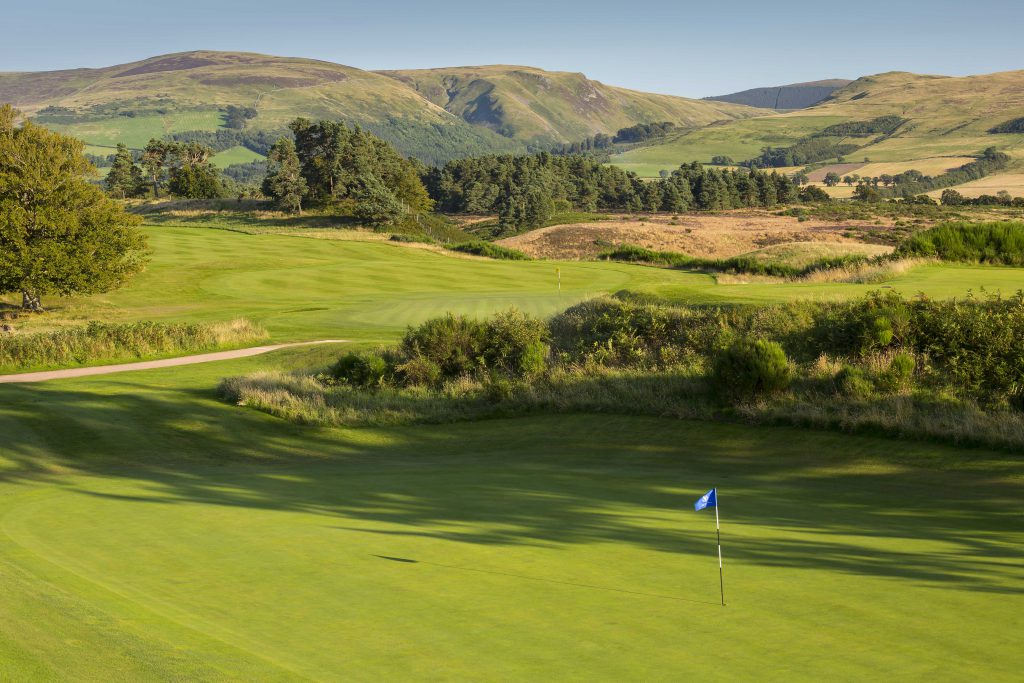
Gleneagles – Queens Course
How has Scott Fenwick worked with you and what experience / advice has he passed on?
Craig Haldane: Scott has been very welcoming and has allowed me to find my feet. We have a mutual respect for each other without question. His passion for Gleneagles is obvious and his ability to share his knowledge of the site and the history of the courses to me is invaluable. You can’t buy his experience on this property, end of.
We have influenced each other in a very positive way. Healthy debate has been a common practice and we are enjoying the process of learning from one another. Scott has been an open book and a great source of information to me and I hope to think that I have been able to take some of the day-to-day stresses off his plate, allowing him to focus on the multitude of projects he is undertaking on the estate side of our business.
Scott has zero ego! He is passionate about our industry and has a genuine empathy for newcomers into our business. He is always willing to share his success story and is a shining example of what can be achieved if you are willing to put in the work and dedicate yourself to this wonderful profession.
You said the business of golf course management has changed. In what way exactly?
Craig Haldane: If we don’t show the golf business that we are professionals at the top of our game who are passionate in delivering excellence each and every day, we will forever be seen as just ‘greenkeepers’ – the guys and girls who mow grass, water it and rake bunkers.
We form part of the business of the golf club to a greater level than ever before. Managing the finance of our business directly impacts the bottom line for the golf club and communication is now without question one of the key skill-sets required. Having the ability to not only set realistic budgets but to communicate and deliver your annual business plan to the powers that be will directly impact the year you are going to have as a business, from both a profitability point of view and quality of product standpoint.
Your membership is your key client. Imagine never delivering after-sales service to a client in any other business? Our members deserve and expect this today. You have to be comfortable talking to your clients at all levels. If it’s a quick chat out on the course or delivering a two-hour presentation in a board room, it is equally important. An informed member and colleague is a happy one.
Internal communication is vital. You have to know how to educate not only your team, but the golf pros, shop assistants, food and beverage colleagues and everyone who may interact with your client.
If the guy in the locker room has the ability to engage with a guest and give them just a small piece of information regarding the golf course they are about to play, this is powerful stuff.
We are a customer-facing department. A customer spends six hours at a golf club and has many touch points throughout his journey. From the minute he makes a call to enquire about a booking, his or her journey has begun. Our teams are tasked with creating a journey for our membership and guests that is consistent from the practice range to the 18th green. This is an opportunity! Don’t let it slip you by.
If you want to be seen as a professional you need to behave and act like one every day. Attended a seminar and sit in the back corner with your rags on looking down and never asking questions? Been out on course and shied away from a member who greets you and perhaps grunt a faint hello? We can’t afford to be this way. Stand tall, be confident and show your knowledge and experience when it matters most. Act like a professional and you will be treated like one.
Can you outline Gary Silcock’s commercial plans for the golf courses?
Craig Haldane: We have three great golf experiences on offer at a consistent price point meaning that you will get to experience the same quality in terms of conditioning throughout the property, irrespective of which course you play.
The King’s and Queen’s are celebrating their centenary years. It is so important to recognise the history and to ensure we review our archives to ensure we are keeping the vision of James Braid in the forefront of our decision-making process.
The King’s is a unique experience with great topography and interesting bunker configurations and placements. We want to create an inland links feel throughout the course by presenting wide fairways that are firm and fast and include bunkers that in the past may have been sat out in semi-rough areas. The way in which we present the course is equally as important. Mowing patterns allow us to create the look required and by keeping up with our minimalistic approach from a fertility point of view, we are well on our way to enhancing the fescue fairways and creating something truly special.
The Queen’s Course is a gem. Heather used to form a big part of the landscape and we recognise this as an opportunity for improvement. By implementing sound woodland management practices we will allow the natural heather to thrive. In certain areas of the course we will bring in heather turf to create an immediate impact, however our aim is to allow nature to do its job by simply creating the perfect environment for this to occur. Again, presentation of the course is at the forefront of our decision-making process and we will introduce similar maintenance practices on the Queen’s to that of the King’s, being very aware of our outputs of fertility and ensuring we are not touching the native areas in this regard.
The PGA is a parkland golf course set within the beautiful landscape that surrounds our property. You could superimpose any backdrop to this course to showcase your ‘typical’ parkland look, but we have the Ochil Hills that are breathtaking and create a frame to the course that is simply beautiful. This is the course that will provide you with tournament standards on a daily basis, not simply in terms of conditioning but as a true test of your golfing ability. If you want to see striped up fairways that are lush green and visually ‘sexy’ then this is the course you would come to play.
So, you want to play an enjoyable heathland course that provides you with spectacular views and is less intimidating in terms of difficulty, then look no further than the Queen’s. If experiencing something that is going to literally take you back in time and which provides you with a unique challenge and creates a variety of shot making opportunities is more your thing, look no further than the King’s. If you want to walk the lush fairways of a tournament course that has played host to some of the greats in our time and get a true feel for what tournament golf is all about, then tee it up on the PGA.
This is after all, ‘The Glorious Playground’ and we are privileged to be in a position to deliver three varied experiences for our guests to enjoy.
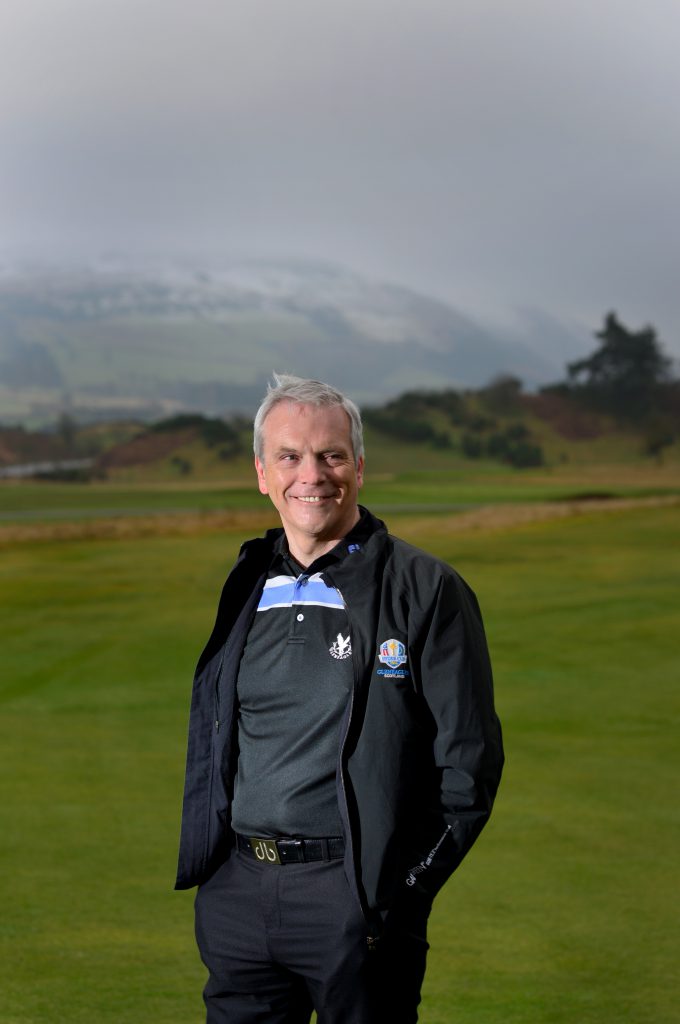
Scott Fenwick of The Gleneagles Hotel.
Scott, after a long interview process, what are the skills-sets Craig has brought to Gleneagles?
Scott Fenwick: The type of people we were looking for were those with a strong background of team management and this is exactly what Craig has brought to Gleneagles. He has a wealth of experience developing and maintaining big teams, which is a skill-set that is important to creating our One Team structure. Developing people is important and now we have a tiered structure within the business, we are looking to place people according to their talents and to the level of their capability, both to benefit them and the business.
What attention to detail has Craig brought into Gleneagles?
Scott Fenwick: Craig has a vast experience of working on high-end golf courses and tournaments. He has an almost inbuilt and in-depth understanding of how crucial attention to detail is and it goes without saying that this is an expectation for any one of the three courses and for anyone visiting and playing Gleneagles.
It’s about the experience! Having encountered the Emirates and worked on the European Tour on tournaments, Craig has been exposed to the level of attention to detail Gleneagles now demands and this is a wealth of experience that we will benefit from greatly when working together in the lead up to the Solheim Cup.
As part of One Team you are currently working on a new greenkeepers’ compound, how does this work differently from now, what is proposed, what is your role in the compound project, what stage are you at currently and when do you expect to complete?
Scott Fenwick: Previously the business operated out of two compounds and part of our objective was to create one team, so the decision was taken to move both compounds into one, as happened in March 2018. At that time it was a tight squeeze as the space was not big enough for the whole team. In December 2018 work started on the new compound, which comprises a new canteen, locker rooms, office space for the course manager and his team and machinery storage. This is being developed out of existing buildings in two phases. Phase one (canteen and office space) should be finished this month and phase two should start this month and will be the building of the locker rooms and machinery storage.
My role is working with architects and planners and putting costs together for the project and working with the construction guys to ensure all is running smoothly. Currently, I’m pleased to say that all is going to plan and we are looking forward to completed facilities in late March or early April – in time for the start of this season. It’s something I am very proud to be overseeing and will be a major contributor to the One Team initiative long term.
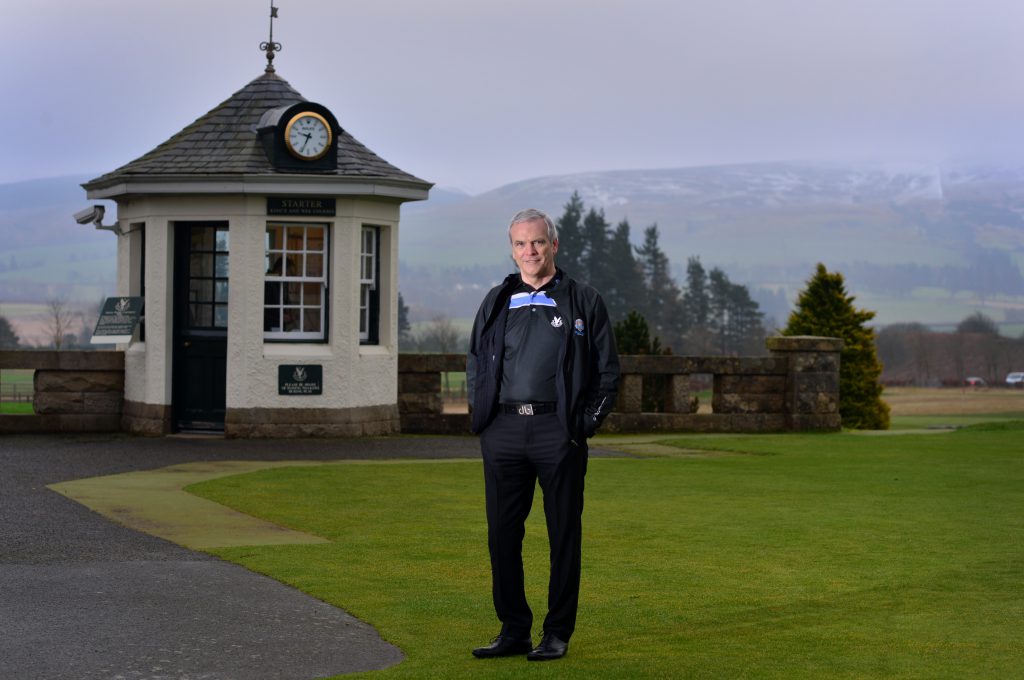
What further projects are coming up that you and the team will be undertaking?
Scott Fenwick: There was a maze installed before the millennium, which now takes a lot of upkeep. Unfortunately, it suffers a good deal of damage from children riding bikes to closely to it. We’ve taken the decision to remove the maze to create a herb garden to supply the Gleneagles hotel. We will retain the outer hedge of the maze to act as a barrier to deer and protect the plants inside and we are going to install a glasshouse which will be used for growing plants, but as an addition, will also be used as a function space as well as being open and available to guests.
Currently we are building a car park screen to make the walk from the hotel a better visual experience. We have a heather project about to start on the Queen’s course. Albeit heather is still there, it has declined over the years, so we are introducing a programme to strengthen and bring it back. We will also introduce heather to the 13th hole and various areas around the course. Some will be done with heather on the site but some will be purchased through Tillers Turf. We shall also be adding some new tees to 13 and 14, so now the 14th hole with play over the loch, which means we have to install a wooded walkway over the loch.
We also have woodland management programme and recently applied to the Forestry Commission for licences to remove trees to improve light and air on the first fairway. So there is a fair amount going on at present.

What lessons did you learn from preparing for the Ryder Cup that can be used to prepare for the Solheim Cup?
Scott Fenwick: The first thing I did with the Ryder Cup was to research previous Ryder Cups, as it has a great history to review and learn from. My considerations were based on looking at Celtic Manor and The K Club, and studying the issues they had experienced, which was high rainfall, which is a big potential problem likely to happen in Scotland.
Originally we were looking at installing a new irrigation system and I got the OK to go ahead. However, one morning when I was sitting in my office looking out at rain running down the windows, I thought if we go ahead with this irrigation system, and it pours with rain, how is this going to help the Ryder Cup? So I spoke to my bosses about whether we could transfer the money from the proposed irrigation system to a sub-air system. I was looking at how we can protect the golf course if we end up with heavy rain. We installed a system on 10th and tested against the 17th and the data showed us that the 10th green started performing better than 17th. On that basis we took the decision to install across all 19 greens, including the putting green, and this has improved the greens’ performance and prevented us from having to replace them.
Bunkers were also a big issue by way of reparations, washout and contamination. We investigated a number of products and found one suitable and this solved the problems, which made a massive difference to how the bunkers performed from the points of playability, maintenance and coping with high volumes of rain.
All the courses have now had this system installed.
You and Gary Silcock chose John Deere as a machinery supplier as part of a long-term relationship. What criteria did you use to select John Deere and what vision did you both have of how the relationship would evolve?
Scott Fenwick: Machinery is a major expense and an investment for our business, so it is important to make the right decision, as it’s not often that change is made. We invited suppliers to tender and the criteria we were looking for was quality of machinery, parts back up and the future relationship between Gleneagles and the supplier, to benefit both businesses. We also wanted to work closely with a supplier to see how we could use and transfer our experience to contribute to future product development, and how potential future business could develop and help our business grow further, as we are always looking to increase productivity and lower cost. It also helps our team in many ways.
Double A has been a big part of the partner relationship. How has Double A contributed to the needs of you and your team?
Scott Fenwick: Apart from supplying the equipment, Double A have played a crucial role in training. We’ve had full onsite training for the full team and all team members have visited and undergone in-depth training at Double A’s facility in Cupar. This is also about building relationships with our supplier that our team can benefit from and that the team are comfortable working with and aware of what the supplier offers by way of support to Gleneagles. Relationships are very important to us!
In what ways beyond purchasing equipment is the relationship with Double A developing to support you and Gleneagles to achieve the desired product in the lead up to this September?
Scott Fenwick: Double A and John Deere will help us with machinery support and will supply additional mechanical back up, together with additional training, especially for the volunteers who will be helping us through the Solheim Cup.
What advice would you give to youngsters starting out and wanting to pursue a career in the profession?
Scott Fenwick: When I started my career I set myself targets and goals to achieve and reviewed these daily. I would recommend this practice. Every day to me was a training opportunity and being aware of what was happening around me was important, and not being afraid to ask questions, no matter how stupid you may think they are. Make yourself available for additional work to learn. Also people above you will notice that you have engaged and will possibly offer you opportunity first when the time comes. Education is paramount in today’s industry, so make sure you invest in yourself.
What changes do you think need to be made to benefit the industry sector and profession of the greenkeeper?
Scott Fenwick: The professional image of greenkeeping has been raised over my career lifetime, however, standards need to be raised further and more opportunity created for those who would like to move further up the ladder.

























